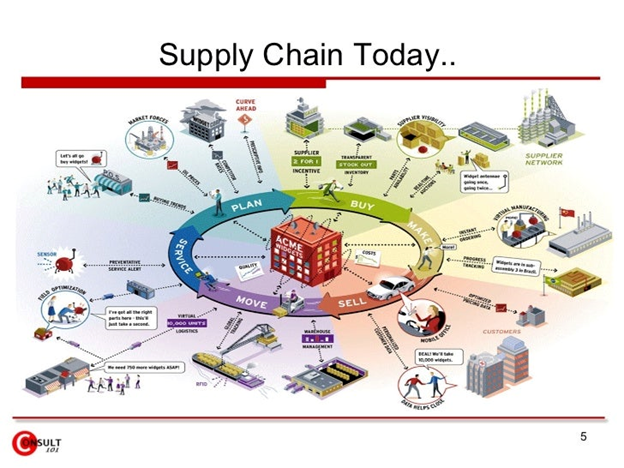Are you frustrated with supply chain management? Join the club. It seems everyone is struggling with a similar dilemma: the more effort and care that is put in, the more complex and difficult it is to manage. This frustration is mostly due to change, complexity, and a focus on efficiency. The good news is that a few changes in supply chain parameters and practices can dramatically improve results.

It’s preferable to gather and analyze data that creates a straight-line supply chain forecast, but this only works well in stable and constant environments. As we all know, business (and the world) have become more volatile, uncertain, and disruptive in recent years. The pandemic caused data from 2020 and 2021 to be almost meaningless in predicting forecasts. As a result, the most recent data is the most reliable and, thus, we need to develop new models and plans based on new data and assumptions.
Furthermore, we are seeing a rise in instances of bottlenecking as a result of a drastic reduction in many businesses. Airlines and shipping companies laid off a significant number of employees with no perspective on how long it would take to rehire and retrain when the economy recovered. There are currently about 10 to 11 million job vacancies compared to a historical 5 to 7 million, which creates all kinds of personnel shortages.
Economic and political changes have also altered the ability to manage supply chain forecasts. Inflation, Ukraine, shortages, and changes in demand have all affected our assumptions. For example, staying at home during the pandemic escalated home furnishings. The demand surge has been somewhat satisfied and is currently declining. Inflation (especially regarding oil prices) has influenced dramatic changes in areas like venture capital, startups, interest rates, and the real estate market.
There has also been a focus on more precise analysis to improve efficiency, reduce inventory, and reduce lead and processing time. Some of these may have gone too far, especially in periods of uncertainty. Computer chips, baby formula, various food products, and shipping are examples where supply chain plans that were intended to make it “just in time” too often have resulted in “just never there.” These situations can be compounded by reduced suppliers in certain industries such as baby food, computer chips, and poultry production.
A caveat: We frequently ignore complexity and its impact on the supply chain. When it comes to our product offering, do we really need all those sizes, colors, and materials? We used to generally have good, better, and best. Now, we have so many variations, who understands them or what the differences are?
Overbuying or underbuying into shortages or excess supply can sometimes increase the disruptions as well. The panic of buying toilet paper during the pandemic caused more shortages because of hoarding. As suppliers catch up in these types of situations, surpluses can then occur that also fuel more shortages.
So, how do we effectively improve supply chain management?
- Most importantly: Pay more attention. When developing new technologies and products, simply consider where, what, and when. For example, many new efforts require more involvement of various resources and need planning to integrate these inputs.
- Consider simplification of products, processes, and strategies. Focus on high volume and profit opportunities. Cutting the right inventory is much more important than just general inventory reductions. In contrast, being in stock on key items is critical. Integrating retail and E-Commerce can facilitate this effort particularly in regards to using E-Commerce to ship low volume items. However, the delivery times must be short. In general, Amazon does an excellent job in these functions.
- Focus on the critical aspects of the supply chain. Long lead times, bottlenecks, and shortages should all receive special considerations. Storing key component parts, air shipping, and developing alternative forecasting models are methods to consider in addressing key issues.
- Collaborate with as many participants as possible. This can help you avoid problems and develop solutions. Learning suppliers lead times and response times can improve flexibility. Sharing forecasts with customers can differentiate inventory, seasonal sales, and other variations to provide more accurate demand models.
Supply chain and timing can be critical performance and cost-saving factors. And there is no shortage of factors you must consider in your distribution decisions. These include shipping and receiving points, lot sizes, shipping quantities, reducing lead times, using similar part components, scheduling components to reduce bottlenecks, and shipping and warehouse charges. Optimizing these areas can improve service and reduce inventory shortages, requirements, and risk. But remember that the decisions you make must balance customer fulfillment needs, inventory risk, terms, ownership, and replenishment.
While there are technical aspects to improving operations, it’s the thinking and integration of each component that paves the way to success. Take advantage of the opportunity to revitalize your supply chain management—in today’s market, it’s the key to improving sales, profit, and competitive positioning.
Related: Think Action Not Problems

